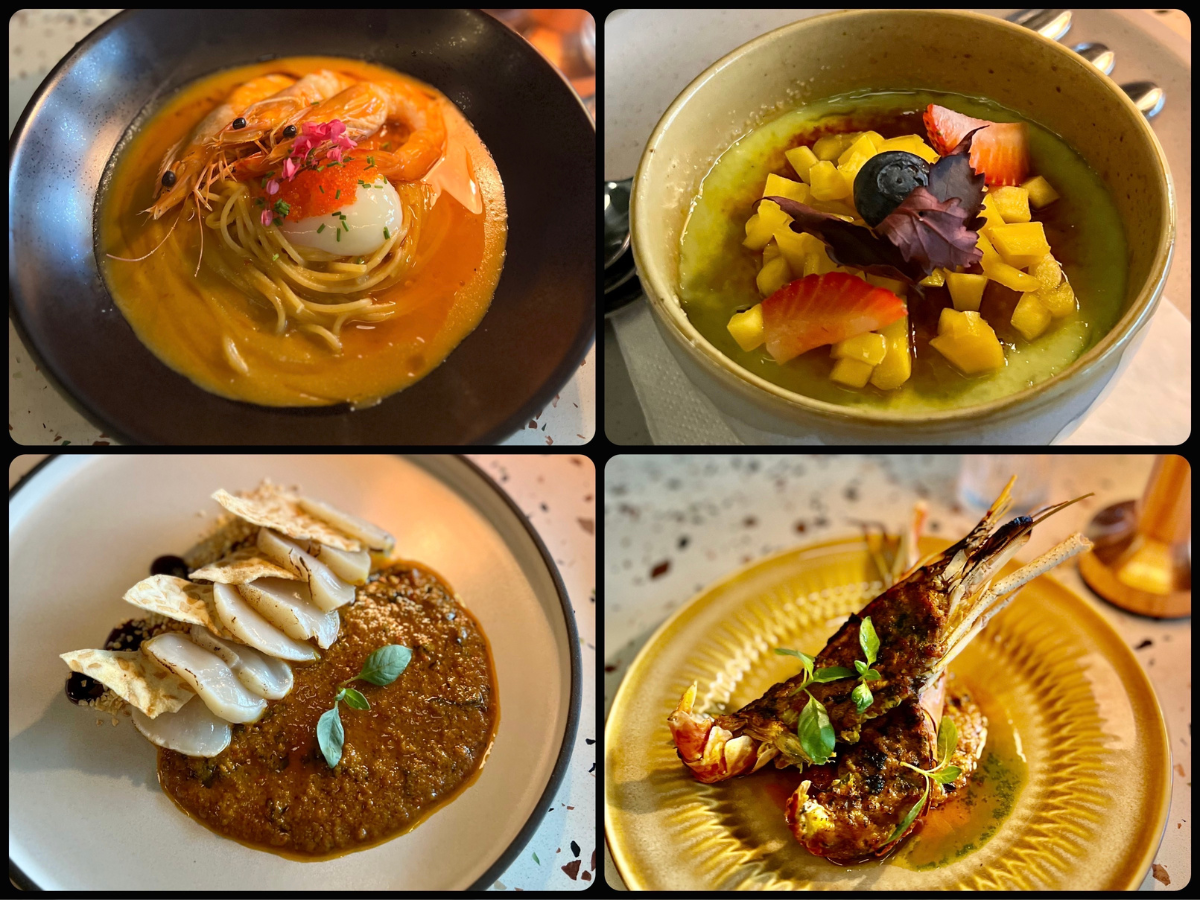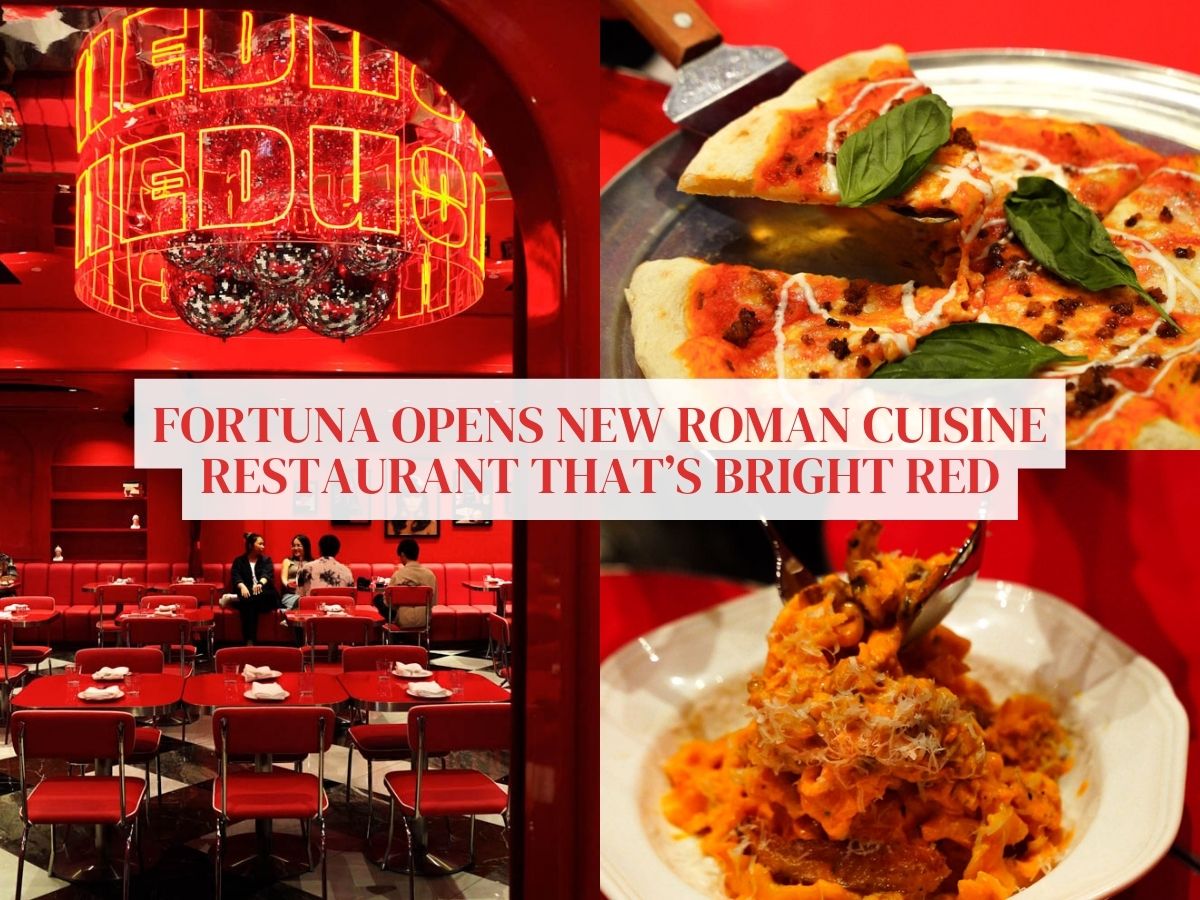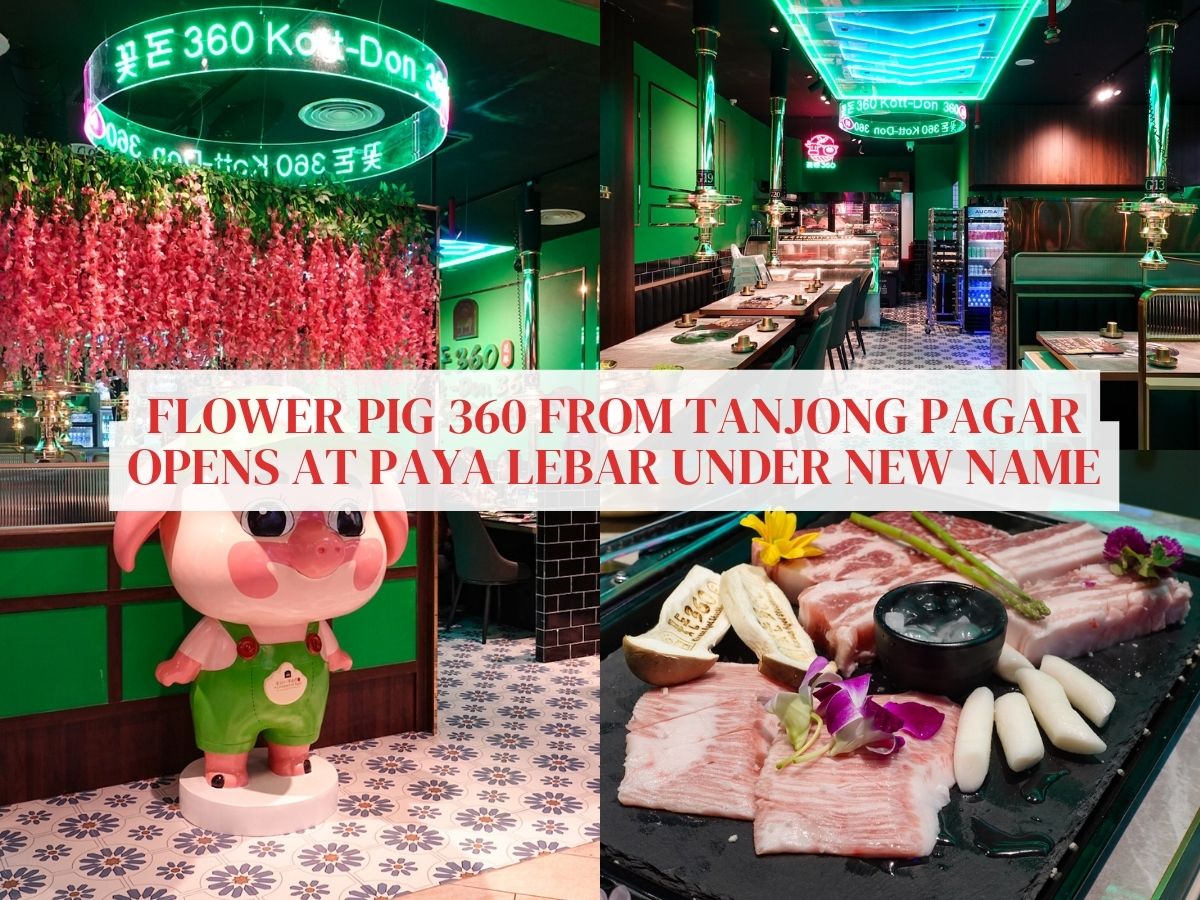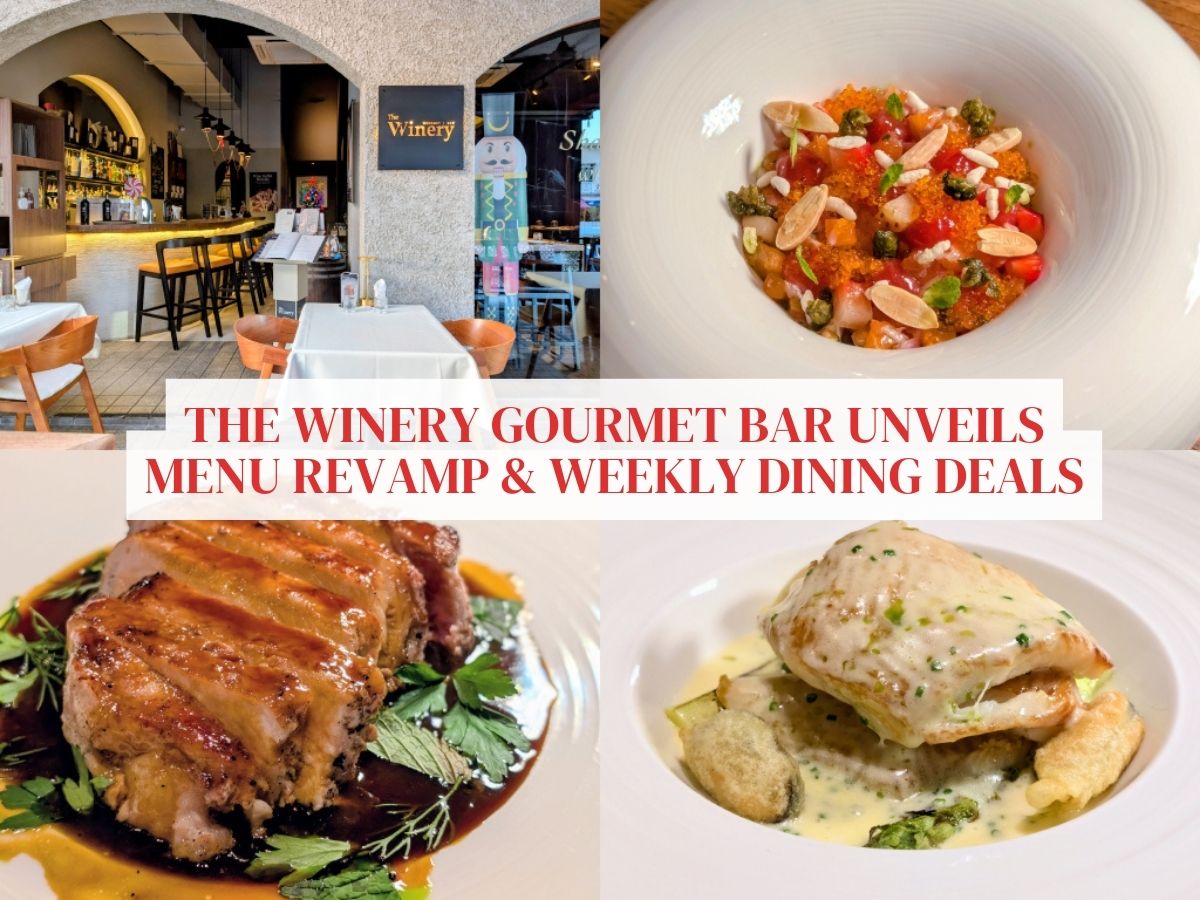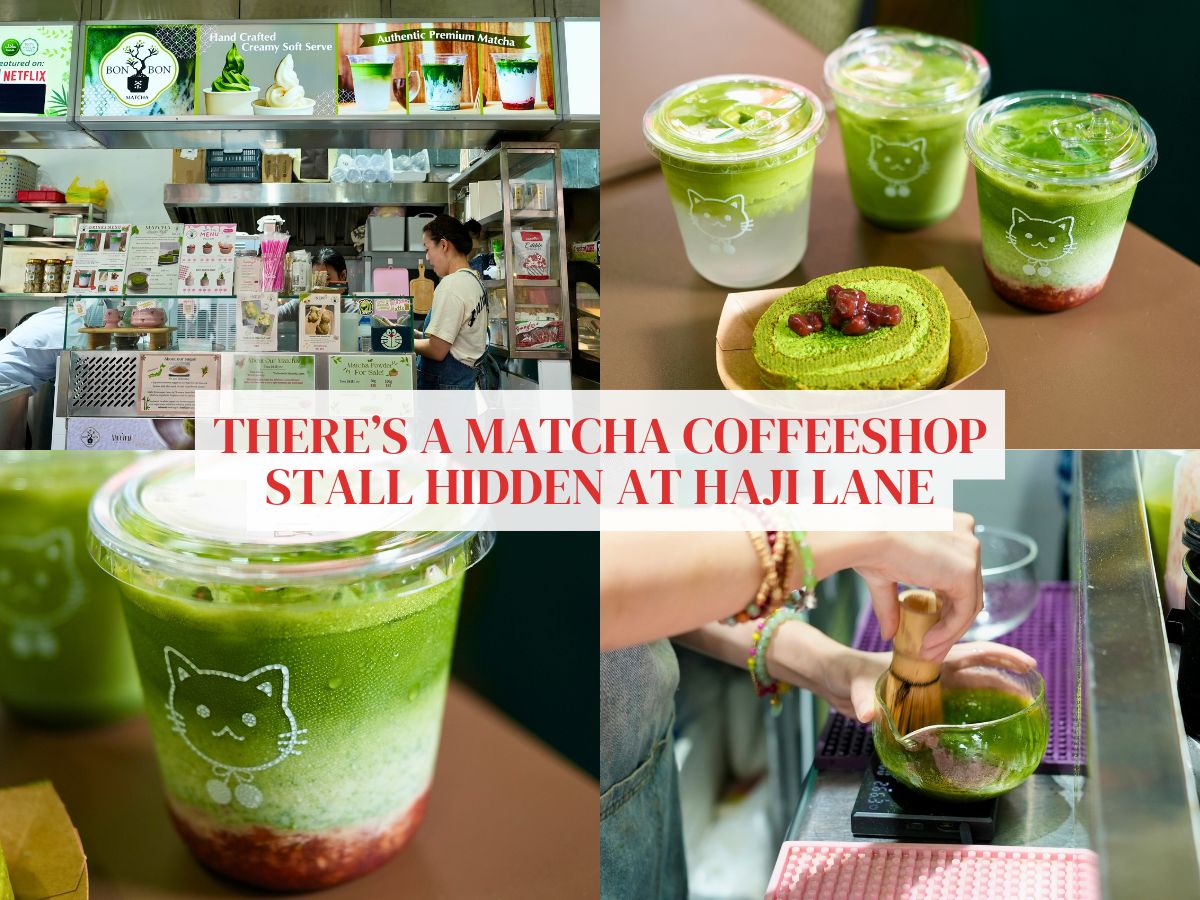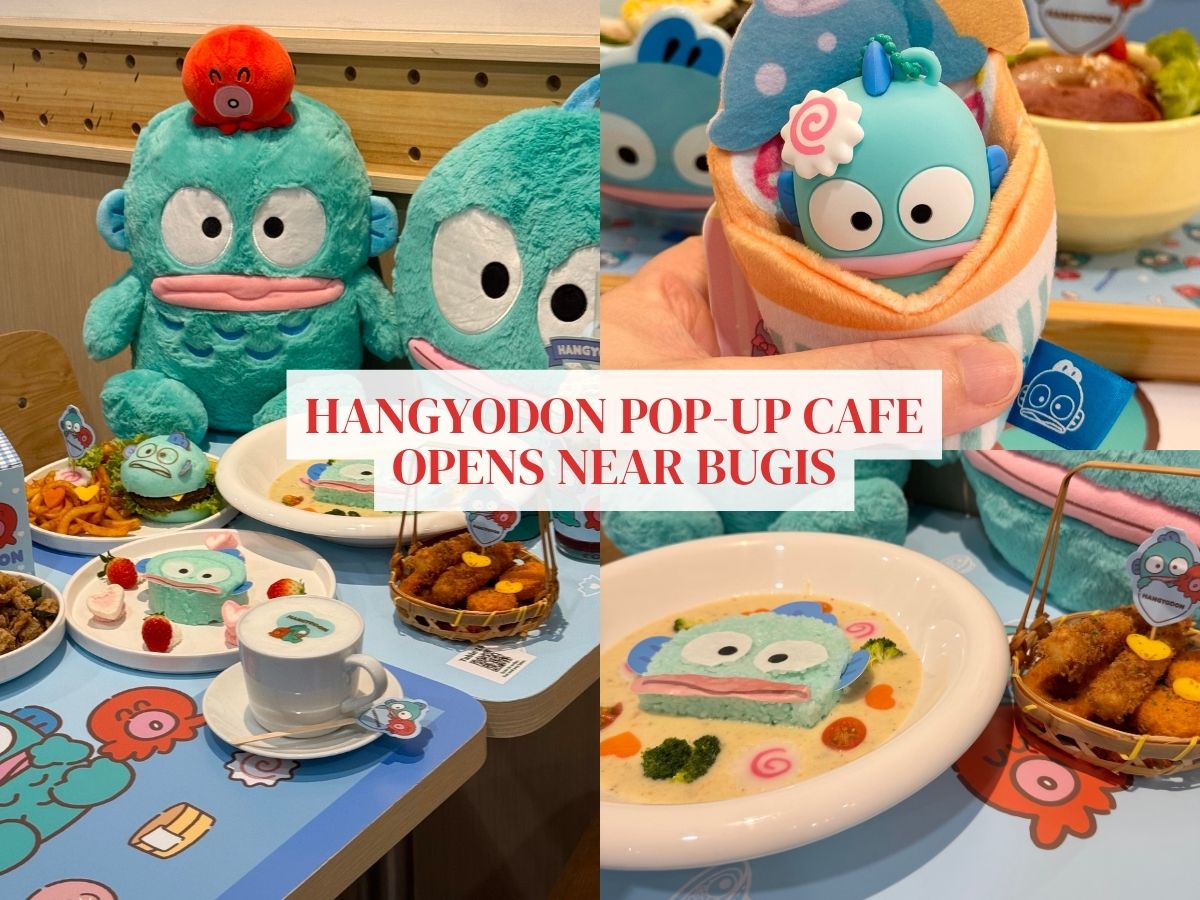Review: Salt & Palm dishes up flavourful modern Indonesian food in Joo Chiat
- Salt & Palm is a modern Asian restaurant featuring creations inspired by the Indonesian archipelago
- Executive chef Natasya Soetantyo aims to put Indonesian food in the same arena as other fine cuisines
- Unlike some modern cuisine, the food at Salt & Palm sidesteps tradition when it makes sense, not when it’s easier
Our visit to Salt & Palm in Joo Chiat began with a scallop resting on curried soil.
Dainty. Gritty. A contrast of textures between the peanut sauce and sliced scallop. Each slice rested its end on the sauce’s edge, as if on a dare.
My fork sank in — a firm bite of sweetness toying with lapping waves of chilli lime.
Behind, puddled mounds of kecap manis shot down any remnants of heat, while crisp shards of tempeh chips surprised with their uncommon pairing — scallops and chips. Playful yet refined.
This is a dish that isn’t afraid.
[google_ad]
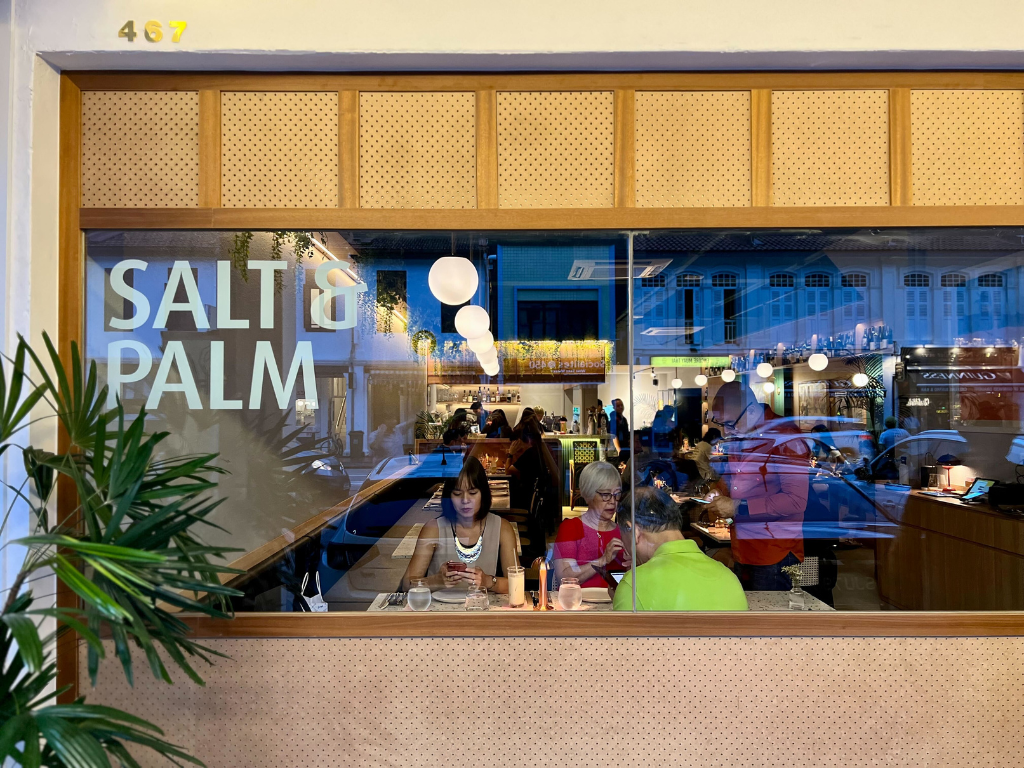
The backstory
Meet Natasya Soetantyo, the executive chef at Salt & Palm with an appetite to put lesser-known Indonesian flavours, such as gohu, on the world map. Think Indonesian ceviche, but with a spiced basil and pandan marinade.
This inventive spirit is also borne out by her R&D experiments on Instagram by way of shrimp-paste oysters with asinan and grapefruit, vegan martabak mesir “pancakes” with curried mushrooms, and mie celor tortellini.
But her strength does not lie only in invention. Street food such as rice platters features on the menu at the original (and only other) Salt & Palm, in Sydney, Australia. Her catering arm Nasiku serves simpler dishes such as nasi jinggo — steamed rice, fried noodles and side dishes wrapped in banana leaves.
It’s her art in both the traditional and modern that makes her food delightful.
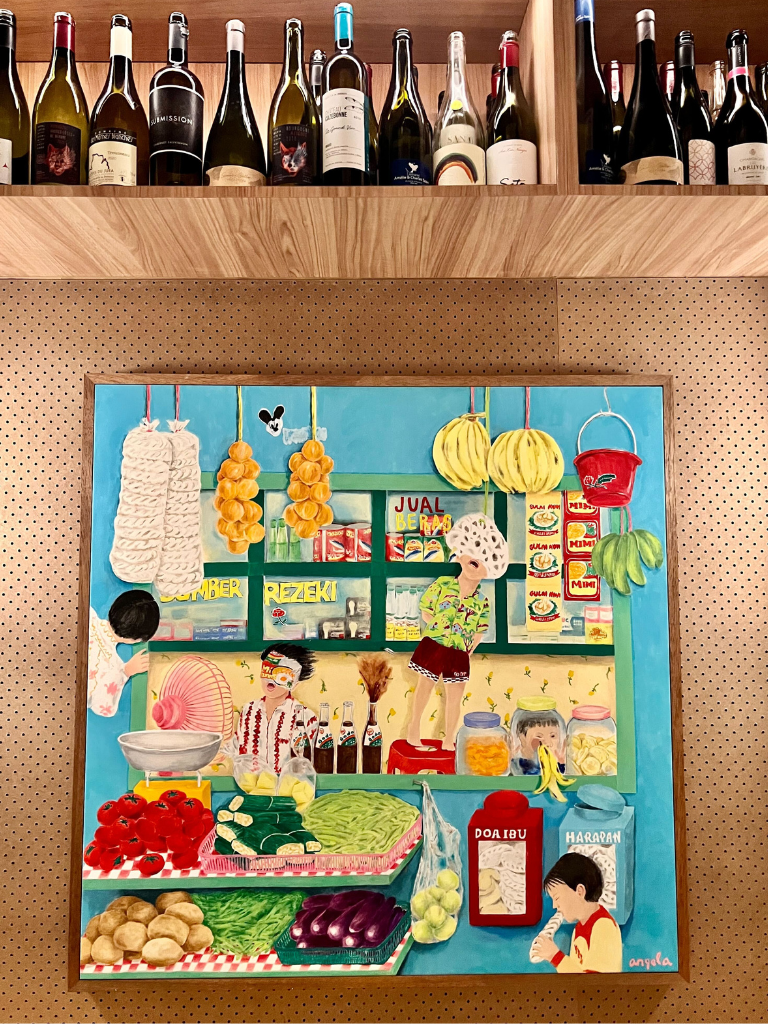
Our verdict
The new Salt & Palm in Singapore offers a taste of Indonesia in the 21st century.
Using techniques and ingredients less commonly found in the cuisine, Soetantyo showcases its flavours, textures and personality — offering an experience unlike any other in traditional Indonesian cooking.
Beyond the food, the cosy atmosphere and eclectic art pieces offer an inviting experience for a night out with friends or a date. Joo Chiat’s five-foot ways and colourful shophouses also make for a relaxing post-dinner walk.
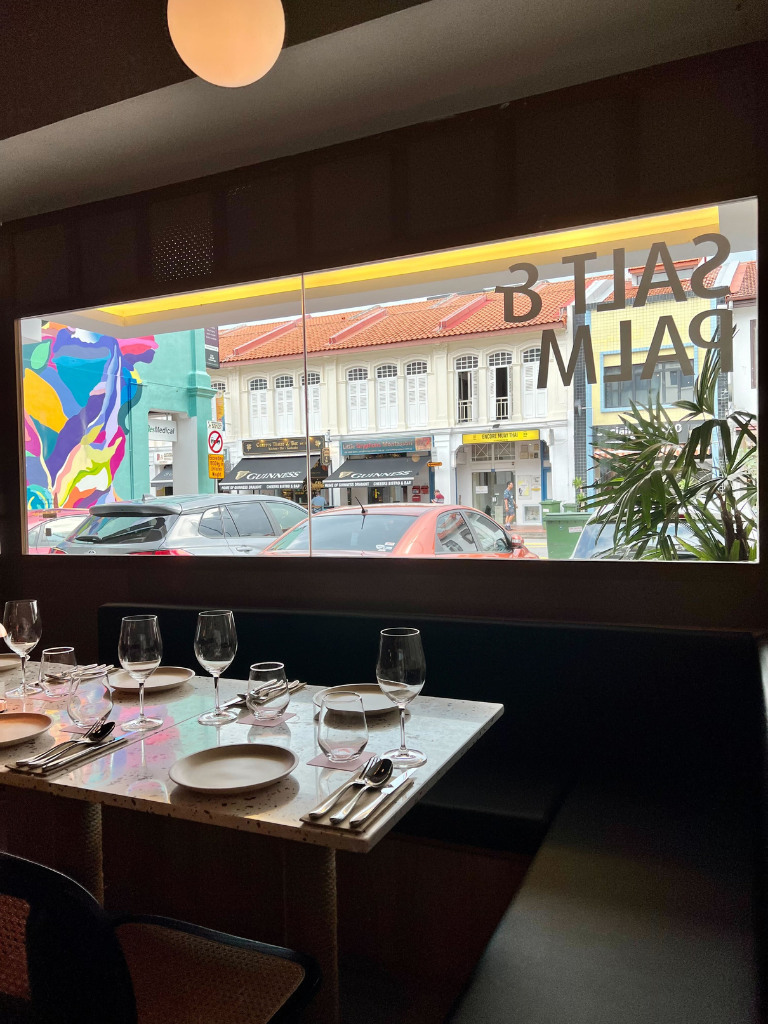
What it’s good for
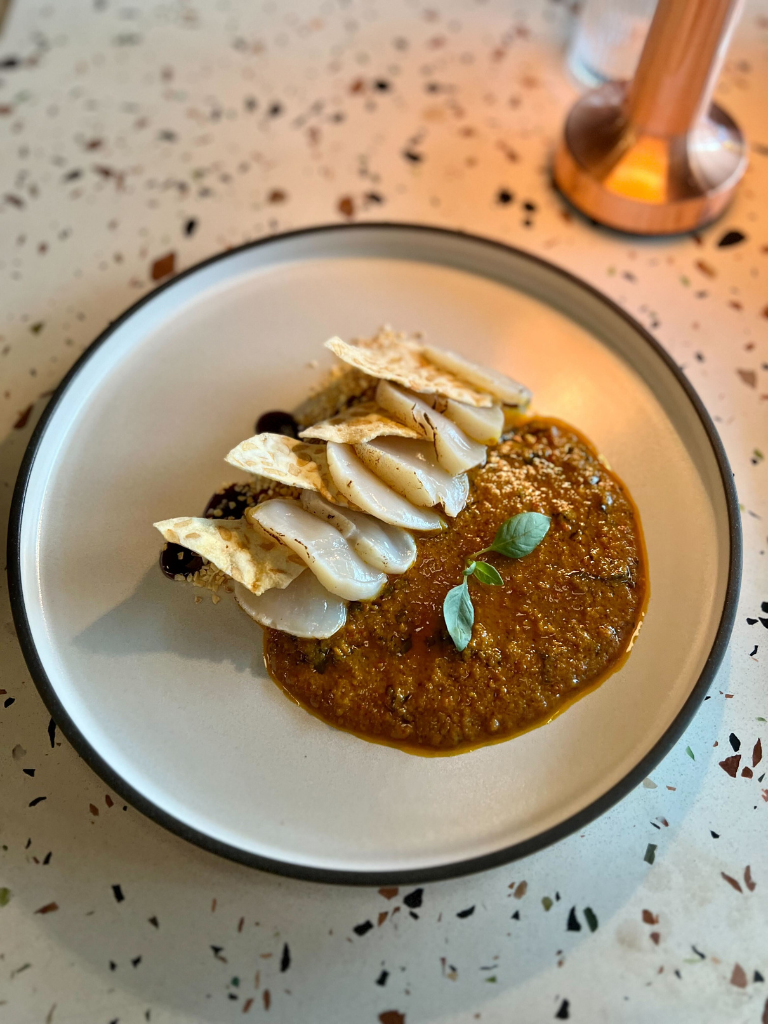
The balance Soetantyo weaves into the Hokkaido scallop (S$22), amid the contrasting flavours and textures, shows her attention to detail and a style of Indonesian cooking that’s not stifled by tradition.
Also, the decision to use the torching method with the scallop is a good one, as it enhances the sweetness without making it rubbery, like pan-searing might (particularly for this variety).
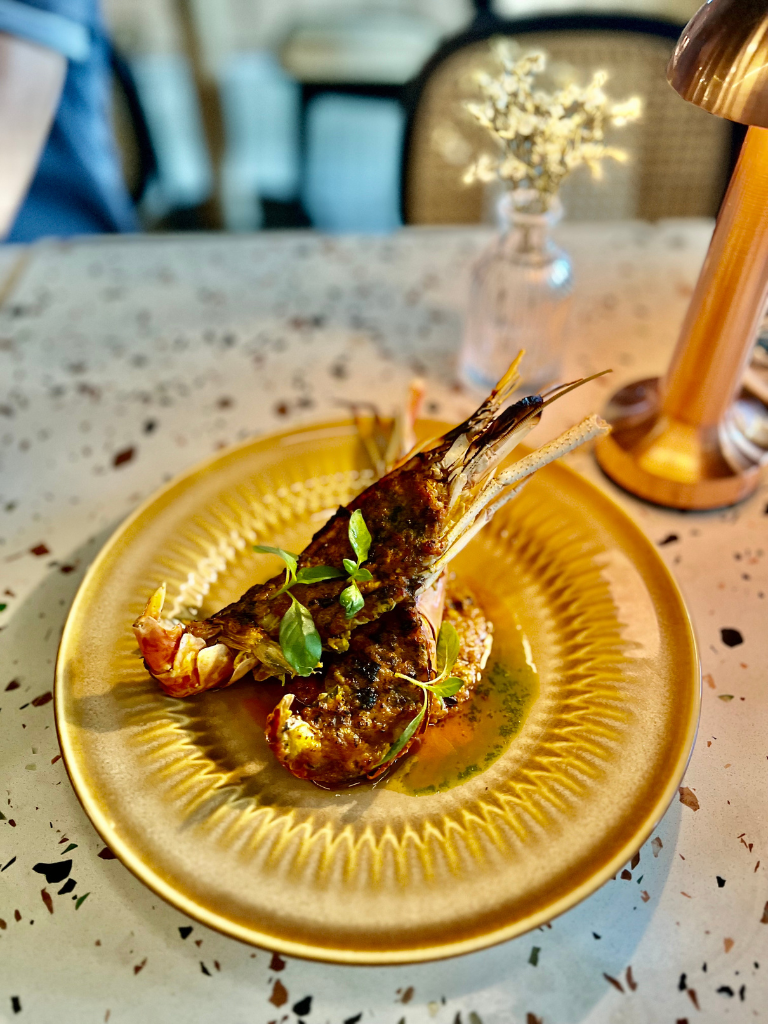
The river prawns (S$35) were also a standout. The light ocean brine was perfumed with lemon basil, and the spices permeated the prawn evenly.
When cut, the shell separated cleanly from the flesh. The prawns were also fresh — the texture was succulent with a slight firmness, and not mushy or tough. But the unique factor was the woku sauce. Its thick paste and blackened bits reminded me of a dry rub.
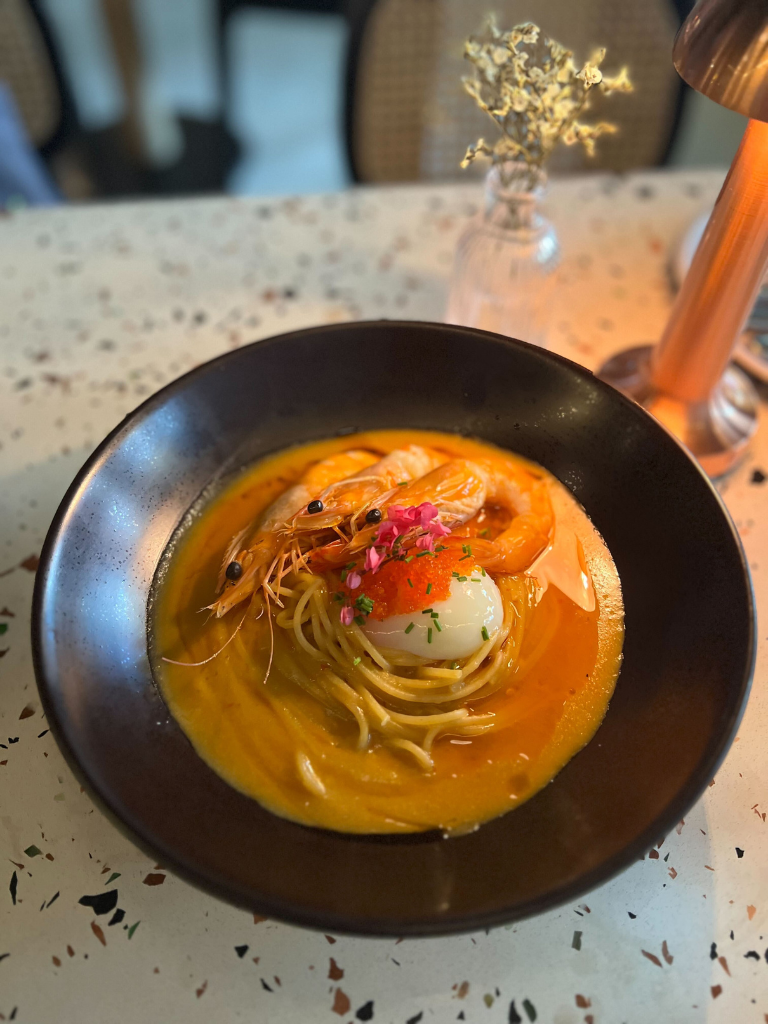
Another knockout was the prawn bisque pasta (S$32), which presented the taste of the sea from the first spoonful. The colour and sheen on the sauce offered a luxurious feel, which complemented the thickness of the pasta that was cooked to al dente perfection.

Some other highlights were the fragrant lemongrass salsa, which came with kerupuk (S$12), as well as the corn fritters (S$15), though I desperately needed a lot more of the tomato salsa to cut through the grease for the fritters.
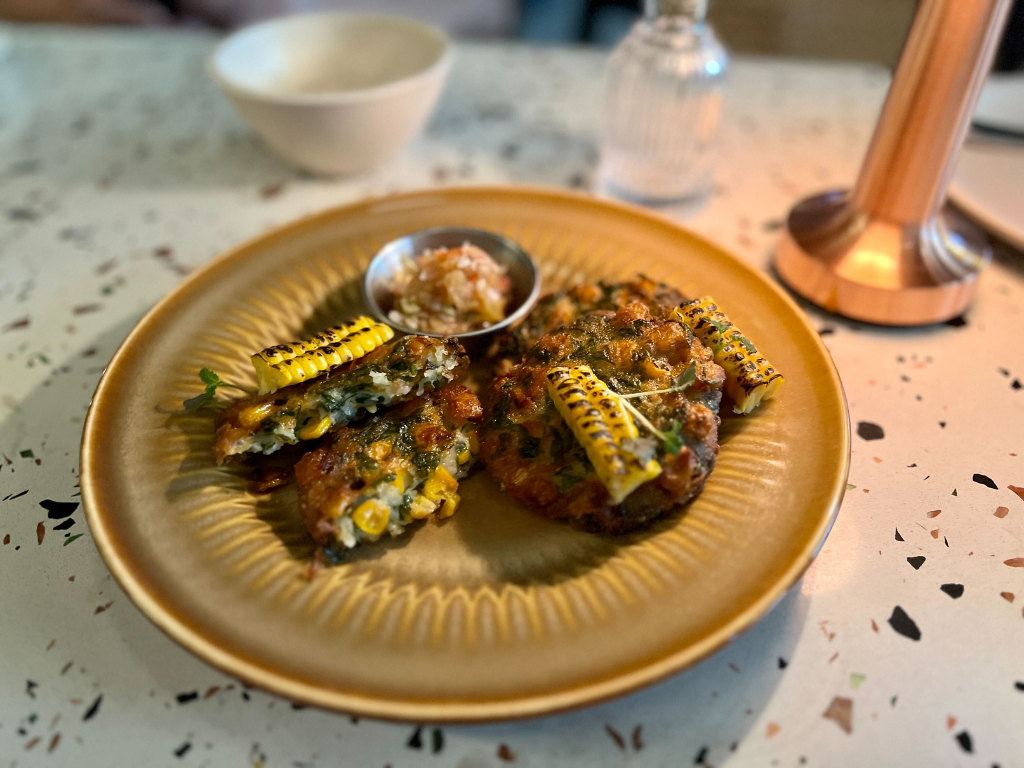
For dessert, I enjoyed the pandan coconut creme brulee (S$15).
Visually, the caramelised crust appeared as a floating island, as if to celebrate the colour of the cream. The crust’s small surface area worked to better reveal the star ingredient — instead of masking it in sugar.
The paper-thin crust gave way gently to the floral and grassy pandan, revealing an essence akin to pandan hydrosol — something I struggle to taste in many pandan desserts.
It was so good I did not want the pieces of jackfruit and coconut at the bottom to interfere with the texture of the cream. Remind me to ask if those could be omitted next time, though this is personal preference.
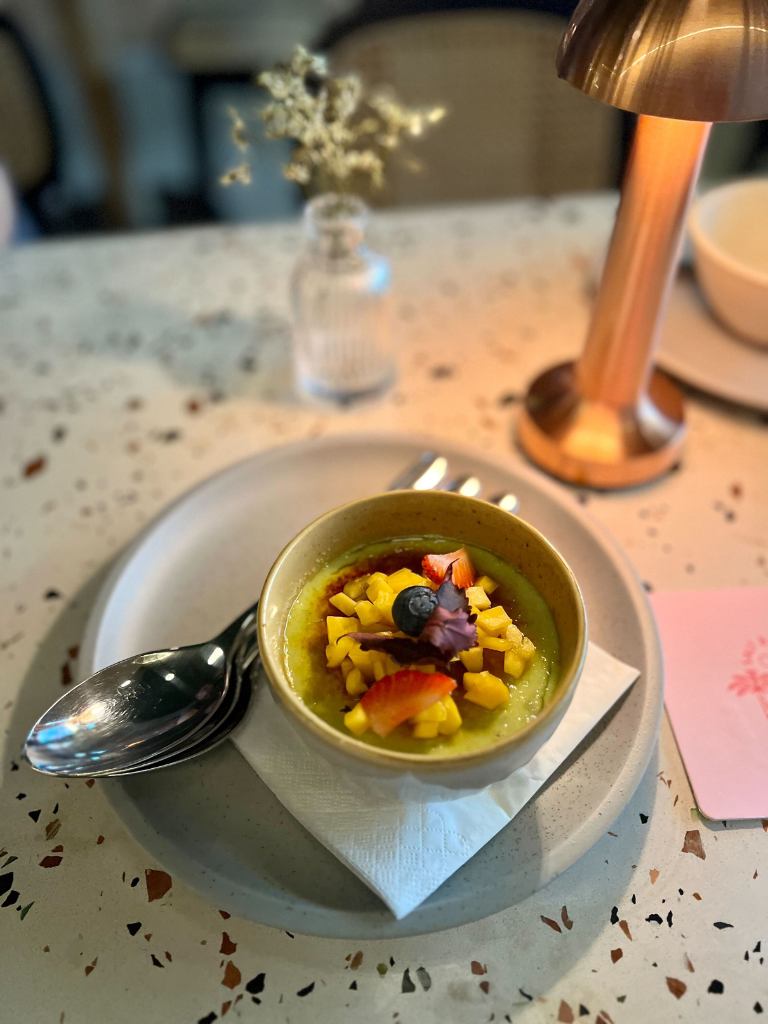
What it could improve on
The bread & dip (S$12) was enjoyable. I liked the tang and structure of the bread’s insides, which went well with the chilli and garlic.
But the other half of the dish was weaker. The chickpea dip was served as a clump of grainy paste, which affected the taste, and prevented me from holding the tempeh crumbs and chives with the dip. Moreover, it masked the spices on the bread.
After a while, I was craving smooth hummus from the grocer next door and had no desire to finish the dip.
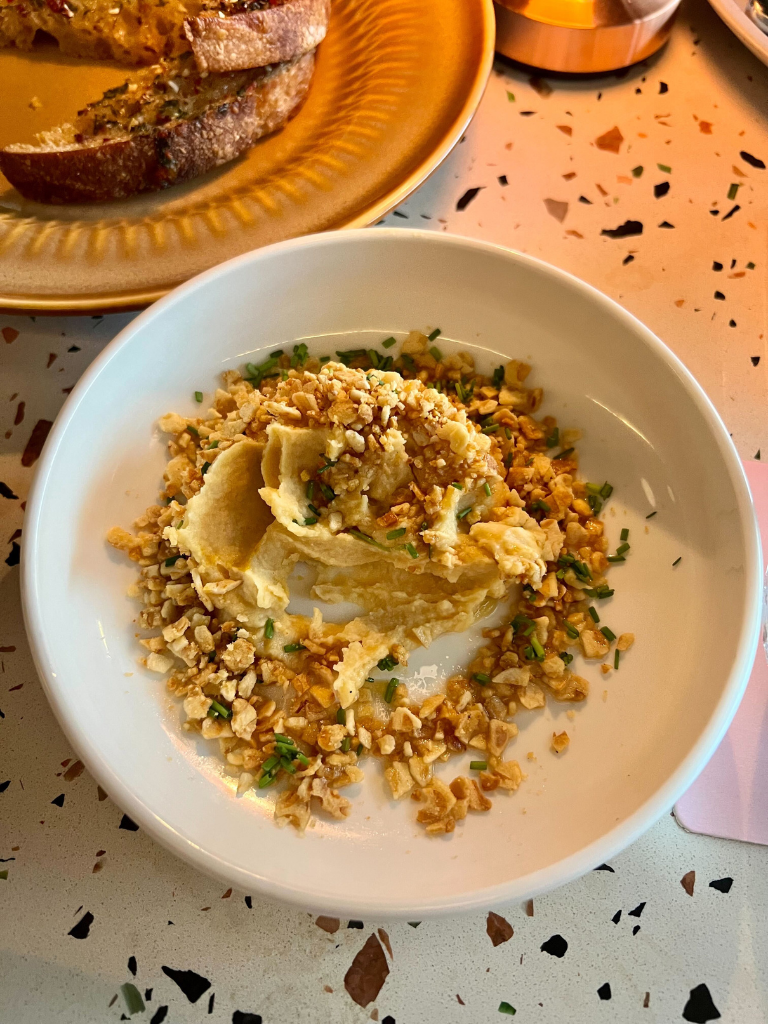
One of the dishes I was excited to try was the mushroom rendang (S$20).
The rendang was delicious. It had a sweet touch and a strong flavour of cinnamon, which I love. But the mushrooms were bitter and their textures ranged from tender to not-so-pleasant chewy.
The potatoes, though, were cooked separately and had almost crisp ends. If anyone can do a crispy rendang while respecting the slow-cooking tradition, it would be Soetantyo.
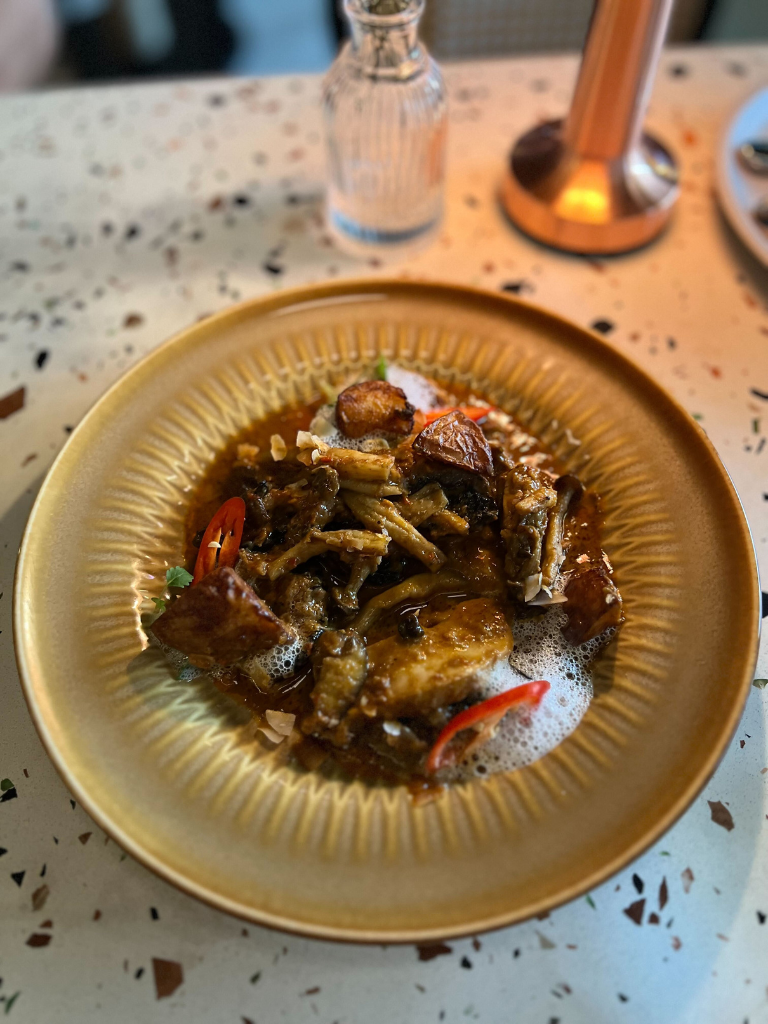
The fishcakes (S$12) were my least favourite dish.
Balinese fishcakes are not as springy as Thai or Japanese ones such as isoage and chikuwa.
This is not a dealbreaker, but I miss the smoky burst of lemongrass I would get if they were skewered and grilled with the herb, like other Balinese renditions of this dish.
Also, the chicken skin tuiles that accompanied the cakes did little to elevate the dish beyond presentation. They were soggy like crepe-paper, and did not offer a contrast or complement to the cakes.
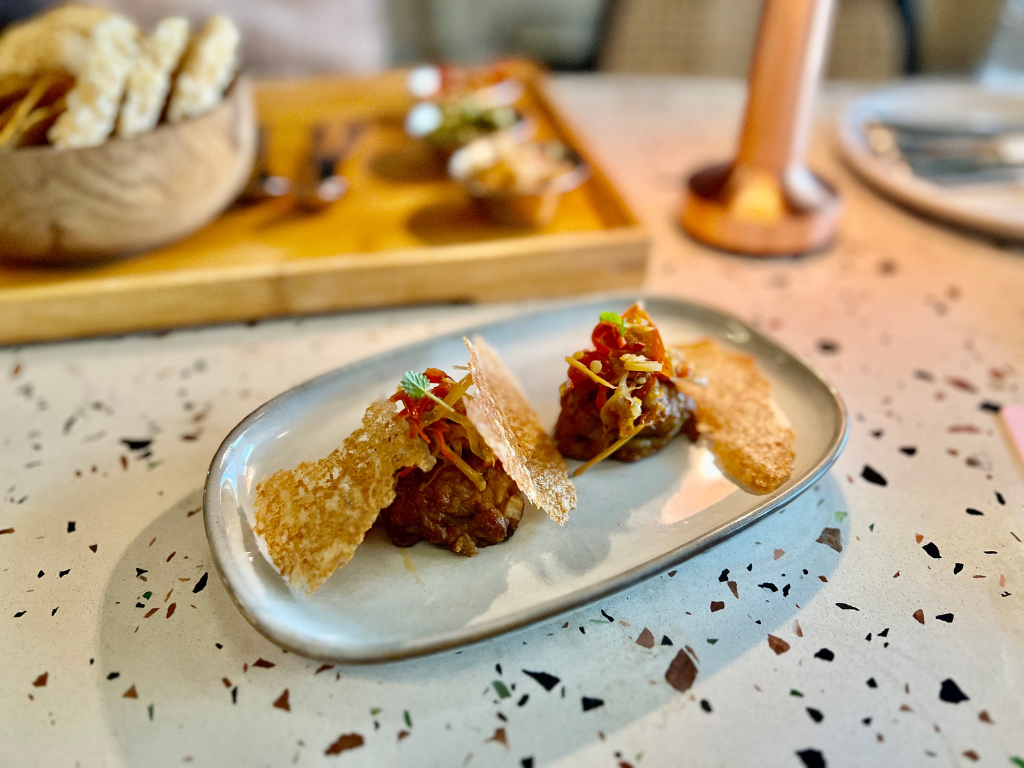
The pavlova (S$18) had a delicate sweetness, which allowed the fruit to shine.
This created a well-balanced dessert that was light, though the mangoes and blueberries were not at their best.
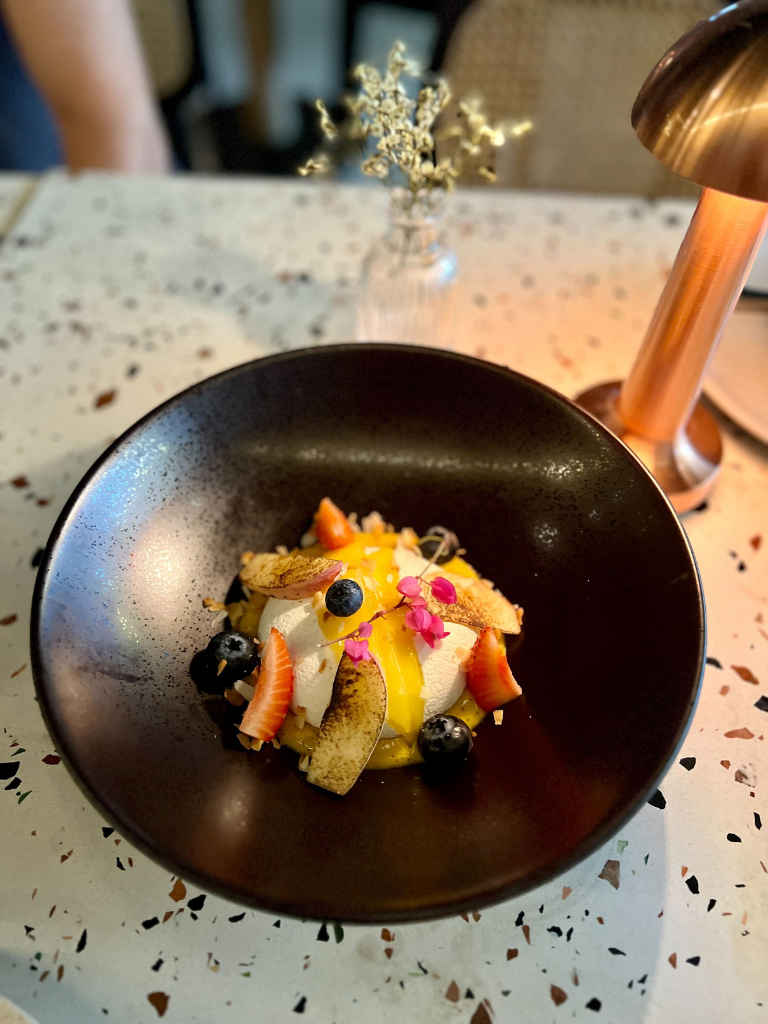
Overall, despite some misses, dining at Salt & Palm was more than just handsome plates.
It was a vibrant, sensory adventure through modern Indonesian cuisine. Each dish, carefully conceived by Soetantyo, showed a playful yet respectful nod to tradition, articulated in full flavour with a contemporary twist.
With that, I look forward to the upcoming brunch menu to see what else Soetantyo cooks up.
Our quick takes
Is it conducive to conversation? Yes.
Is a reservation necessary? Yes, though you can try walking in at 5pm.
How to get there? The nearest MRT station is Eunos, from which it is a 25-minute walk to Salt & Palm. Consider taking a Grab or a bus.
HungryGoWhere paid for its meal at this restaurant for this review. Still hungry? Read our reviews of Mutiara Seafood and Unatoto.
Book a ride to Salt & Palm.
Salt & Palm
467 Joo Chiat Road
Nearest MRT station: Eunos
Opens: Monday, Wednesday, Thursday and Sunday (5pm to 10pm), Friday and Saturday (5pm to 11pm). Brunch menu pending.
467 Joo Chiat Road
Nearest MRT station: Eunos
Opens: Monday, Wednesday, Thursday and Sunday (5pm to 10pm), Friday and Saturday (5pm to 11pm). Brunch menu pending.
